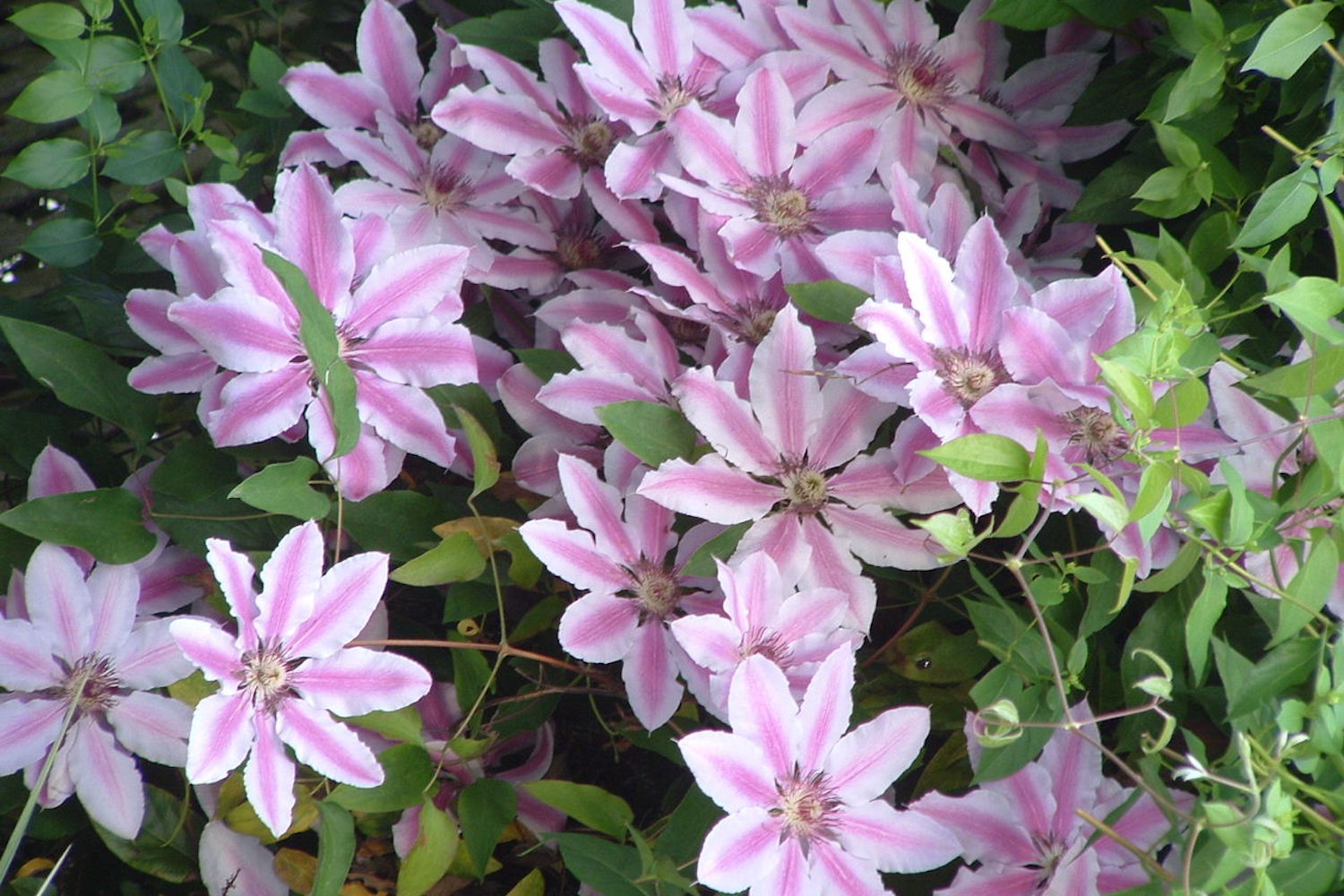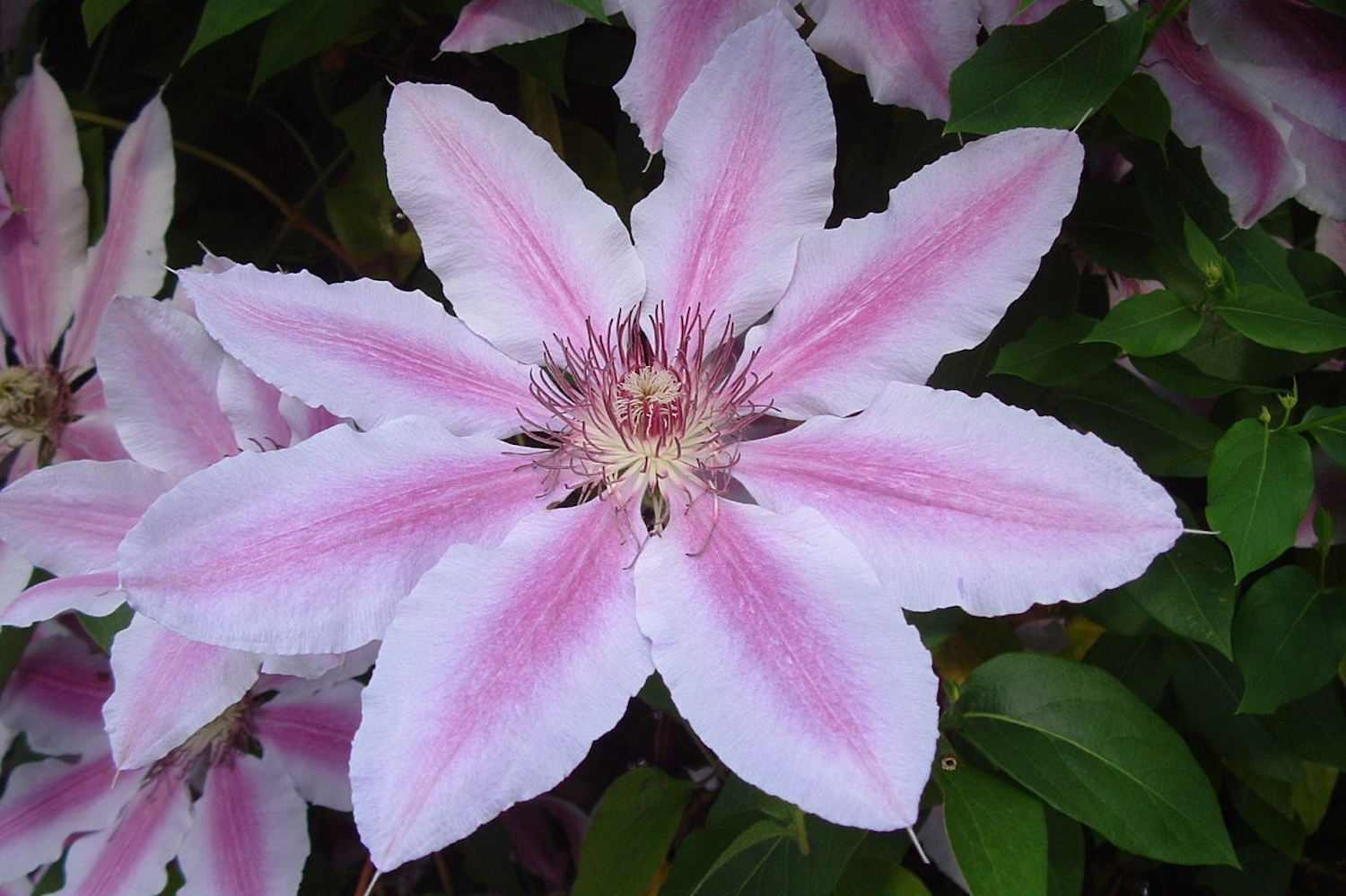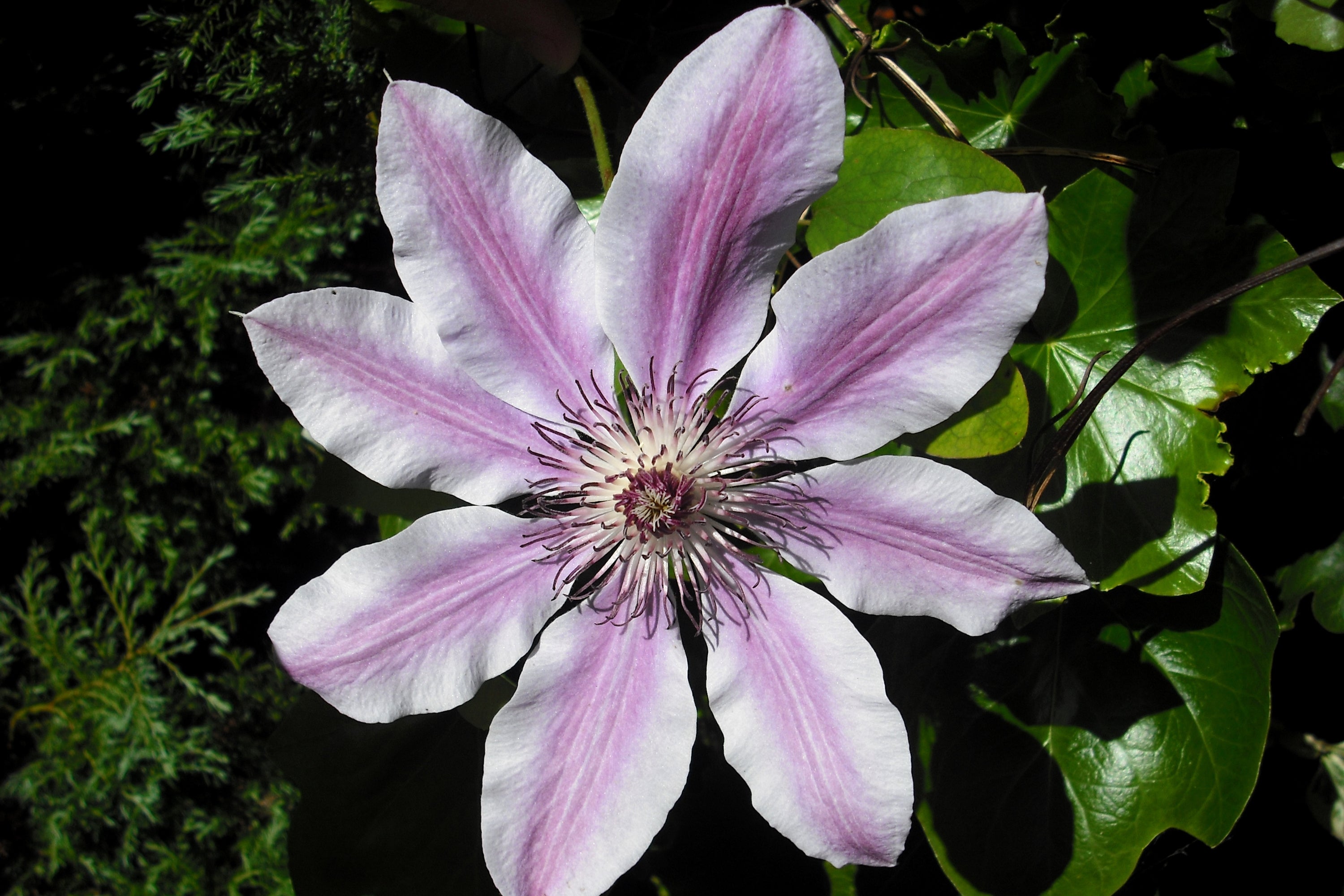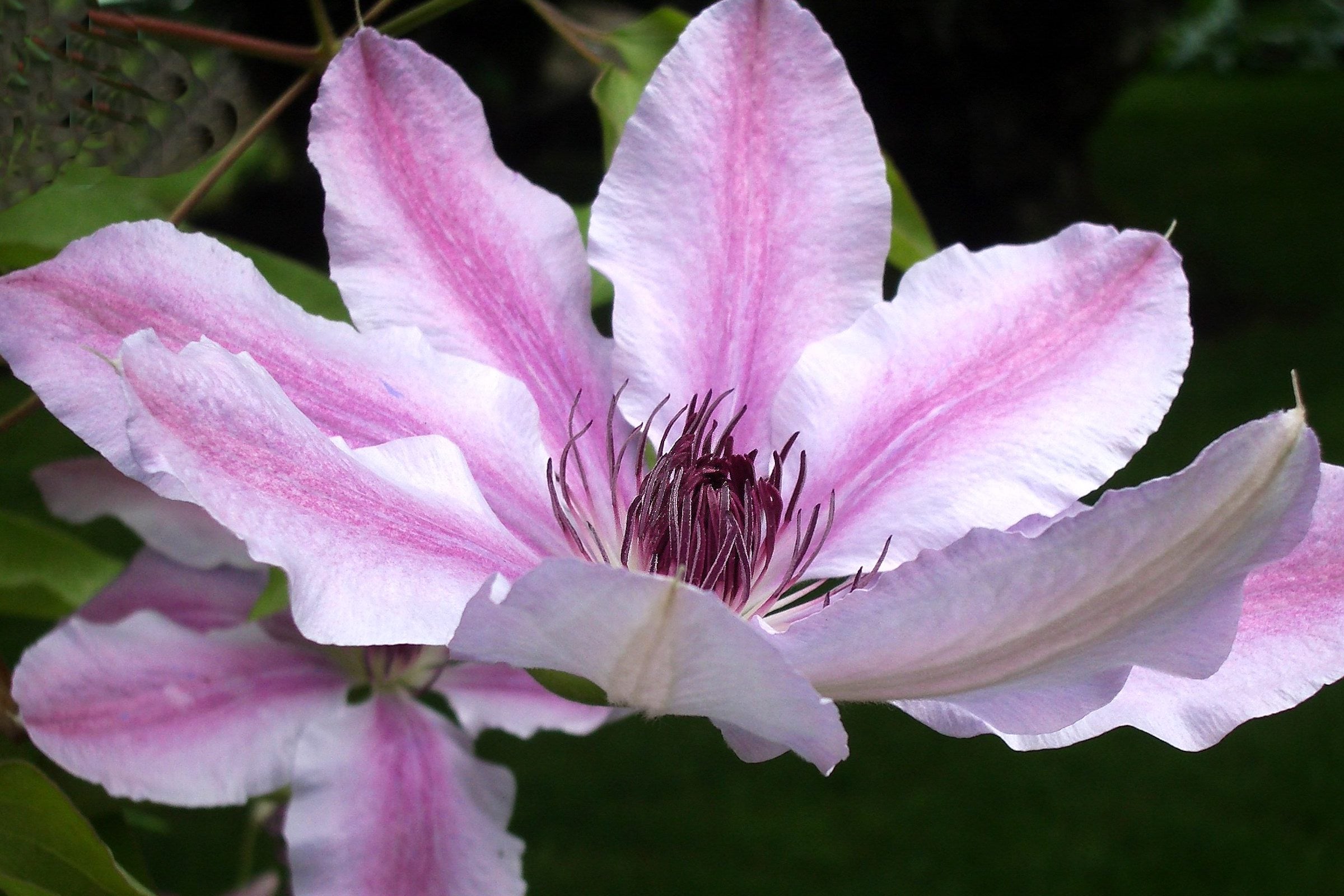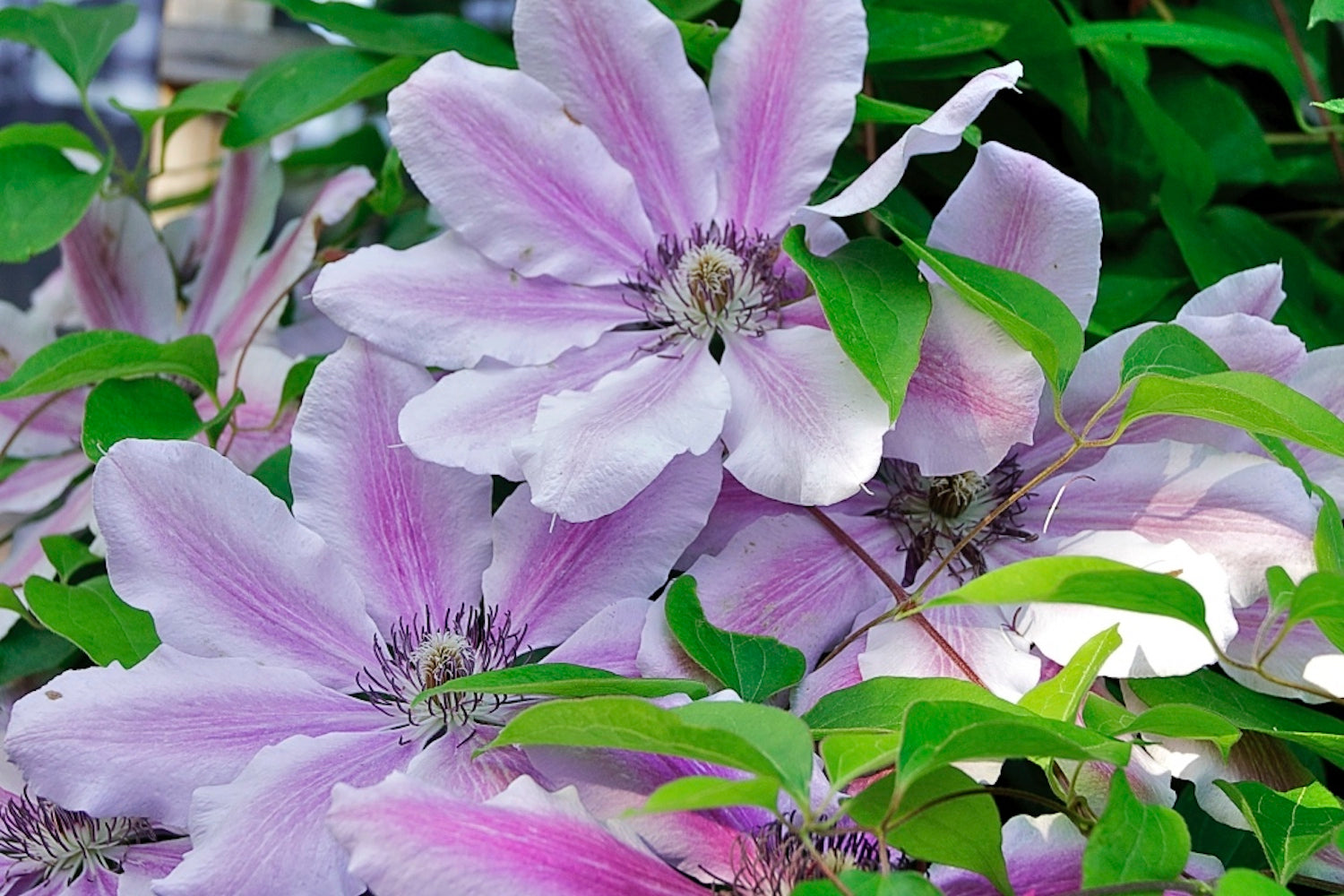Clematis 'Nelly Moser' (EL)
Approx. 0.5 litre pot
About this cultivar:
Clematis 'Nelly Moser' has large single flattish flowers with eight rosy-lilac sepals, each with a distinctive contrasting carmine bar. Large globular seedheads follow. Flowers in late spring to early summer and early autumn. Flower colour fades in strong sun, so watch out (not that we have this problem on the British Isles).....
According to Brewster Robertson "It was not the first cultivar with contrasting midribs. Even at the Versailles nursery where it was released in 1897 it followed a barred variety that the owner liked well enough to introduce with his own name. (C. 'Marcel Moser,' still in the trade, and a good cultivar.) Crossing this namesake with another barred clematis from Lemoine called 'Bélisaire,' now lost, he next produced 'Nelly Moser.'
And that was just the beginning. In the ensuing century 'Nelly' was bred to countless clematis by hybridists around the world, working as usual to get a combination better than anyone else had, and the result has been a constant outpouring of rival cultivars, most of them barred. Not long ago when we in the West finally had the opportunity to catch up with clematis from breeding programs in countries behind the Iron Curtain, we learned that an astonishing number of them involved the pollen of 'Nelly Moser.' And throughout all this attention from the professionals, 'Nelly' steadily maintained its own popularity with gardeners. It has not been dispossessed by its children.
Why? First, of course, people must like the way it looks, but it is also a dependable grower and relatively easy. It is strong, capable of spreading well from the base, and adaptable to all sorts of garden uses."
- Position: Full sun, partial shade
- Soil: Almost any soil, grows well in Ballyrobert
- Flowers: May, June, August, September
- Other features: Royal Horticultural Society Award of Garden Merit (RHS AGM), Grows well in Ballyrobert
- Hardiness: H6 - Hardy in all of UK and northern Europe (-20 to -15°C), Fully hardy - grows well in Ballyrobert!
- Habit: Climbing
- Foliage: Deciduous
- Height: 150 - 250 cm (5 - 8.5 ft)
- Spread: 50 - 200 cm (1.5 - 6.5 ft)
- Time to full growth: 2 to 5 years
- Plant type: Herbaceous Perennial, climber
- Colour: Pink, white, green
-
Goes well with: Drainpipes, roses, trees, walls, anything they can climb; even other clematis
About this genus:
Clematis, is one of our favorite genus. But not just ours. William Robinson (1838-1935) said about them ‘As hardy as the British Oak…I believe them to be the finest of all hardy flowers and wish them a pleasant time with their admirers.’ Christopher Lloyd (1921-2006) even started a specialty Clematis nursery within his famous garden at Great Dixter.
Clematis (meaning"a climbing plant" in ancient Greek) is a genus of about 300 species within the buttercup family (Ranunculaceae). Their garden hybrids have been popular among gardeners, beginning with Clematis × jackmanii, a garden standby since 1862. Most species are known as clematis in English, while some are also known as traveller's joy, (a name invented for the sole British native, C. vitalba, by the herbalist John Gerard), virgin's bower, old man's beard, leather flower or vase vine.
Clematis are mainly found throughout the temperate regions of the Northern Hemisphere, rarely in the tropics. The wild Clematis species native to China made their way into Japanese gardens by the 17th century. Japanese garden selections were the first exotic clematises to reach European gardens, in the 18th century.
The climbing varieties are valued for their ability to scramble up walls, fences, and other structures, and also to grow through other plants, such as shrubs and trees. Some can be trained along the ground to provide cover. Because of their adaptability and masses of spectacular flowers, clematis are among the most popular of all garden plants. Because different cultivars flower during different seasons it is, in theory, possible to have a clematis in flower at any time throughout the year.
They will grow in almost any garden soils and situations, many can be grown in containers. They are a great plant for any garden - don't believe they are for informal gardens only. We grow them almost everywhere in Ballyrobert. Try them with drainpipes, shrubs, roses, trees, anything they can climb;even other clematis.
Much confusion surrounds Clematis pruning. We say - don't worry. As mentioned above, Christopher Lloyd had a specialty Clematis nursery. Here is a I-think-relevant 1969 quote of his "[The] gardener’s eternally repeated question “When should I?” and “What’s the best time to?”, I've concluded that nine times out of ten the answer is “When you’re thinking about it; when you’re in the mood.”" Amen to that.

